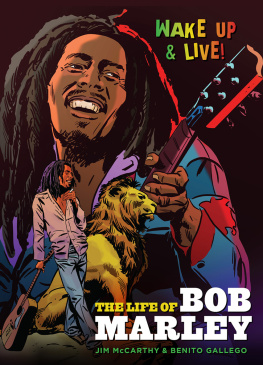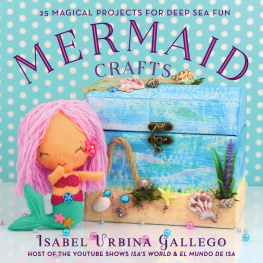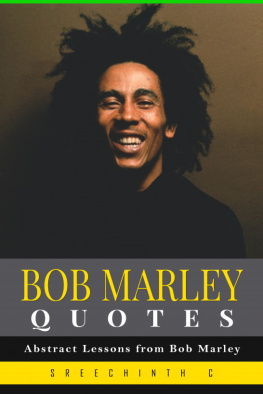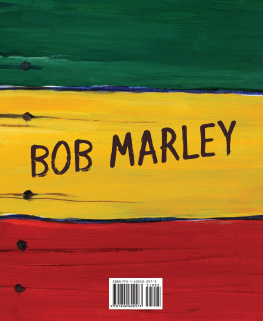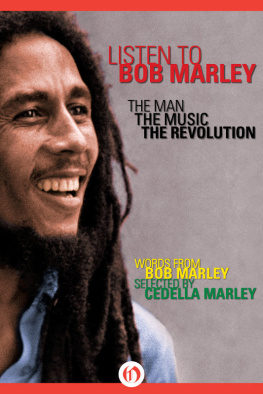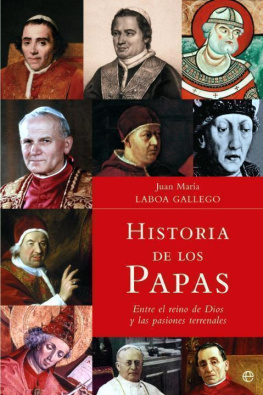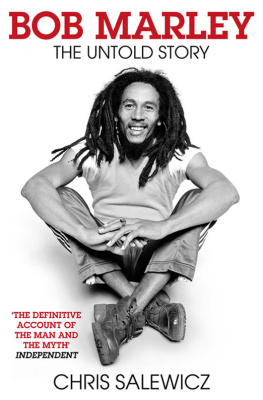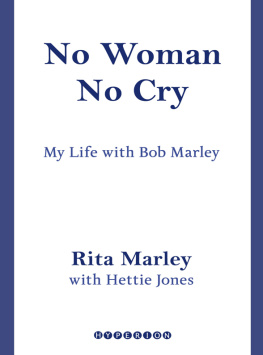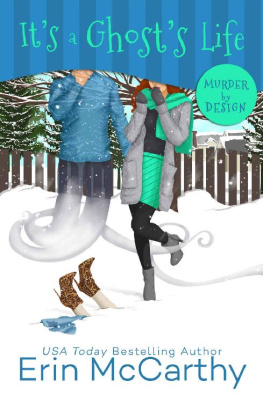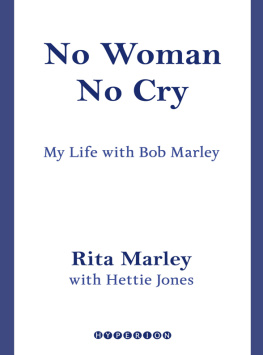ALSO AVAILABLE...
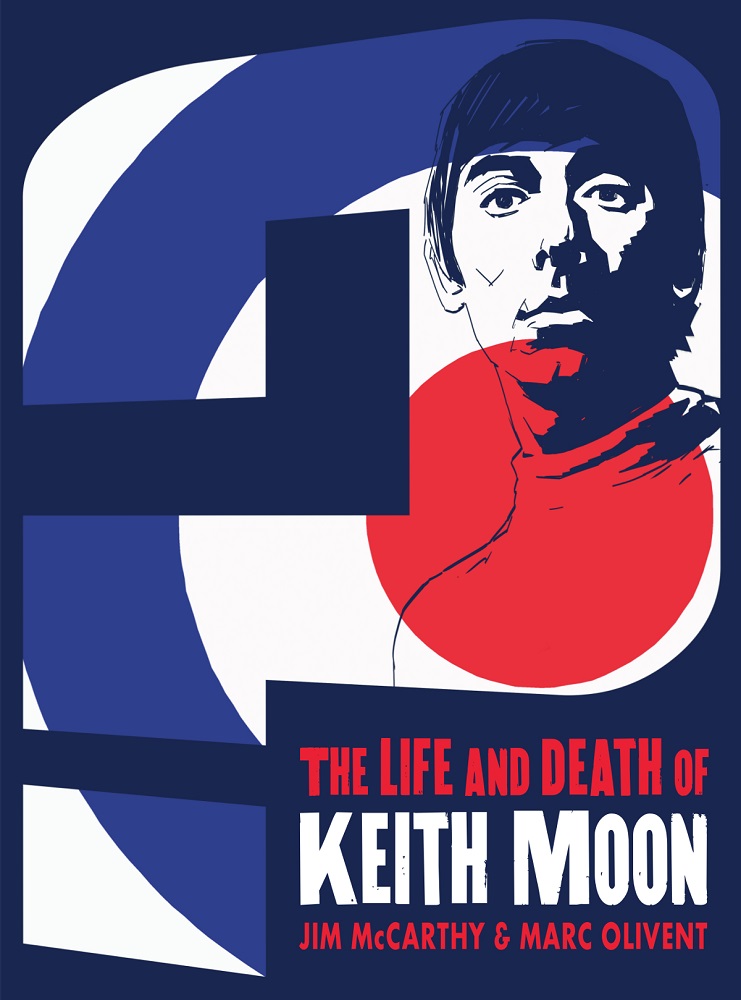
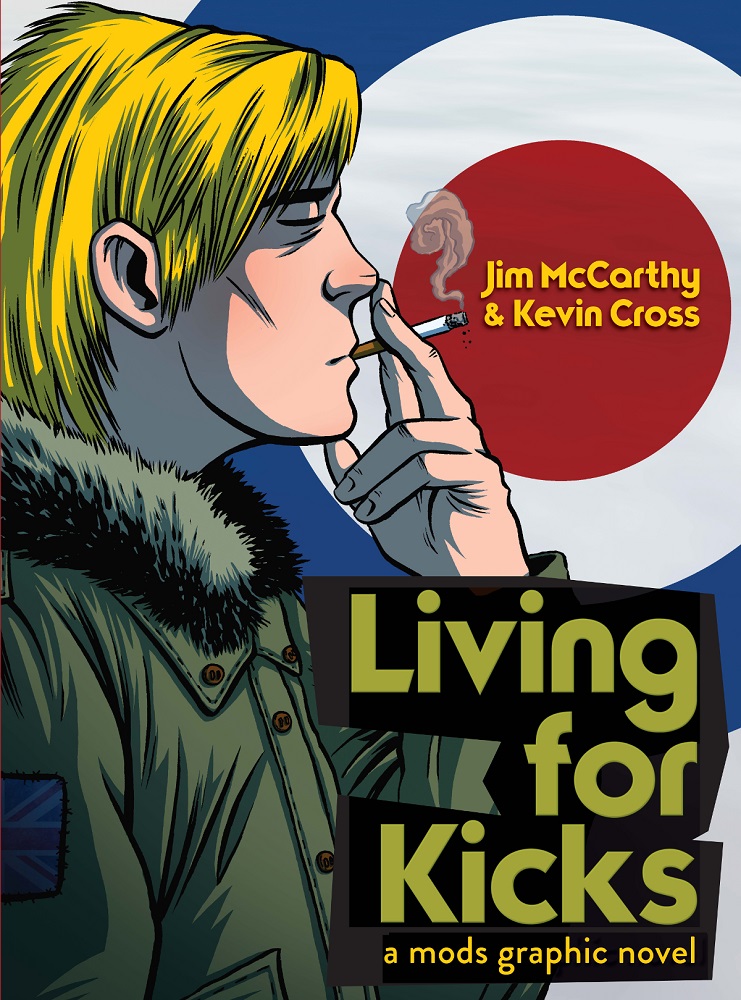
VISIT www.musicroom.com

INTRO DUCTION
I f he were alive today, Bob Marley would be over seventy years old and probably still rocking given that he was a contemporary of Bob Dylan and the Rolling Stones, who both tour regularly. Hed be revered certainly, but then you cant write a body of songs like he did and not be lauded as one of the all-time greats.
I like to imagine him as an elder, cast from the same mould as Johnny Cash and Willie Nelson old-time warriors whod seen and done it all, and yet never stopped believing in the power of music to transform our lives. Marley would have cut a roguish figure after squiring so many beautiful women and frequently getting busted for herb the revolutionary fervour of the seventies having long transmuted into freedom loving eccentricities, probably. And Im sure the magic would still be there when he performed, just like when Toots strides out on stage in his studded leather, ready to raise the roof, or a hush descends upon the audience as Jimmy Cliff starts singing Many Rivers To Cross . The intensity that Marley brought to his live show was the only thing that wasnt drilled to perfection. Although no one escapes the ravages of time not even singers whose music has touched the heart and soul of millions yet Bob Marley is the exception, since hes now become an immortal. More than thirty years after his death the trademarks that we associate with him (the dreadlocks, wry smile, ganja spliff and Rasta colours) can be seen the world over, from Australia to Zambia and all points in-between. Hes a global icon, and with a level of cultural importance that few other deceased celebrities can match. As yet theres no Hollywood movie but books and documentaries are plentiful and his music continues to outsell all other reggae releases, including those by his sons and grandsons.
In addition to leaving us such great songs, hes come to symbolise core values that people the world over can identify with such as freedom from oppression, an end to discrimination and equal rights and justice. Unusually, he
was more concerned with getting his message across than fame or fortune; but the King of Reggae has become a brand, and theres now a profusion of Marley related goods on the market including headphones, skateboards, trainers, plastic dolls, coffee, soft drinks and medicinal marijuana products. Consumerism has replaced veracity, whilst Marleys memory is now cloaked in mythology much of it welcome given the huge boost that hes given reggae as a genre, the Rastafari movement and Jamaica itself. Its fascinating to see how the actual person has become secondary to our collective need for super heroes. Some claim that Marley was a prophet, and point to how the universal truths inherent in his music continue to inspire people from every walk of life, and of all ages and nationalities. Others seize upon the rebellion in some of his songs and see him as a revolutionary Jamaicas very own Che Guevara and defender of the poor who was unafraid to speak out for what he believed in, whether his religious faith, an African liberation struggle or the legalisation of marijuana.
Its against this backdrop of shifting perceptions that Jim McCarthy and Benito Gallegos graphic novel should be viewed. Theyve explored the mythology thats built up around Bob Marley, as well as tracing the outlines of his actual story. That means if Trench Towns narrow lanes and single storey houses get transformed into a tropical suburbia with two up, two downs, its because the artist is putting his own spin on things. Steered by Jim McCarthys authentic use of patois, hes created a backdrop thats inspired by the real story, but is no longer confined by it. Were living in a post-truth world, and witnessing the emergence of writers and artists who blur distinctions once considered unassailable, and create new art from a distillation of fact and fantasy. Jamaican novelist Marlon James did this with his book A Brief History Of Seven Killings , which reimagined the assassination attempt on Bob Marley and its aftermath to extraordinary effect.
The real-life Marley was always searching for ways to make his music more accessible, whilst retaining control over his affairs. He had his own studio, pressing plant, record label and roster of artists, and he and The Wailers also published a newspaper and hosted a weekly radio show. They utilised whatever platforms were available to them and graphic novels would have been no exception, had they existed in the seventies. Marleys main concern would have been the content and the messages it contains yet all novels are works of fiction by definition, even when they do adhere to a familiar storyline. Benito Gallego is at his very best when drawing Marley under attack from the supernatural, or reeling under a hail of bullets during the attempt on his life. Elsewhere, fans of The Harder They Come will recognise the scenes as the young Marley journeys from the rural parish of St Anns to Kingston by bus, and later makes his recording debut for Leslie Kong. Perry Henzells film was hugely influential in bringing Jamaica to life for many people, both visually and culturally. Over the past forty years its helped shape a narrative about reggae music and Jamaica that persists to this day, for good and for bad. This book is very much of the zeitgeist, and reflects a popular mindset that embodies all of the myths and idealism that goes into creating a legend, as seen through a prism of cultural differences. Its Marley through the looking glass a visually dynamic interpretation of a Third World superstar who travelled from rags to riches and became Lord of all he surveyed.
Marleys greatest gift was to ensure that reggae music has continued to thrive beyond the era that gave birth to it. Thanks initially to Legend his first posthumous hits collection and the bestselling album in reggae history hes the only Jamaican artist whose music has permeated the mainstream and stayed there. Theres hardly a radio station anywhere that hasnt playlisted Is This Love , Three Little Birds or One Love songs that appeal to the broadest possible demographic, both lyrically and musically. Thanks
to songs like these, the sinuous, one-drop style of reggae that he introduced to the world is now ubiquitous yet he also planted the seed in peoples minds that reggaes not just a genre of music, but a lifestyle one that enshrines values that arent limited to Rastafarians alone, but that we can all believe in.
In real life, Marley went far beyond the chilled out, one love philosophy heard on the records mentioned above. He once spent US $250,000 of his own money flying his entire band and their equipment to Zimbabwe, so they could play at the countrys Independence celebrations. Marley didnt just have sympathies with the African liberation movement he took an active role and actually made meaningful contributions to it. He and Peter Tosh were fearless in standing up for what they believed in, which is a rare quality in singers of all genres, and from any era. When Marley performed at the 1976 Smile Jamaica concert, just two days after being shot (an event thats memorably illustrated here) he was urging the people of Jamaica to be unafraid, even of murderous gunmen. It was this righteous defiance, honed by years of hardship, that separated him from every other long-haired, denim clad troubadour who entered the seventies rock scene with a guitar in one hand and spliff in the other. If Bob Marley still matters and he clearly does, since he remains one of the worlds most visible symbols of hope and freedom then its not entirely due to his looks, or ability to fashion a hit tune. Its because he cared about humanity, and wrote songs that were intended to influence our thinking about war, poverty, greed and injustice, as well as the environment and what we eat. Thats why the Bob Marley story which is now happily available as a graphic novel continues to inspire, long after the man himself shed his mortal form and has assumed multiple others.





